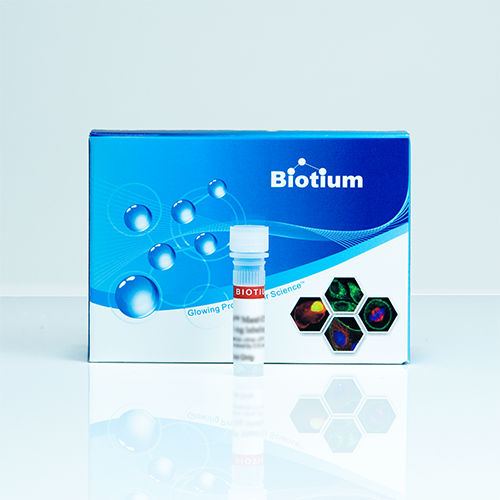Mag-Fluo-4, AM Ester
Membrane-permeant AM ester form of Mag-Fluo-4, a fluorescent magnesium and calcium ion indicator that is an analog of Fluo-4.
Please fill in the inquiry form and we will contact you shortly.
Wishlist updated! View wishlist
Product Description
Membrane-permeant AM ester form of Mag-Fluo-4, a fluorescent ion indicator and analog of Fluo-4. Because of the relatively low water solubility of the AM ester, the mild detergent Pluronic® F-127 (cat# 59004) is often used as a dispersing agent to facilitate loading. The indicator has an affinity for magnesium (Kd = 4.7 mM) and low-affinity for calcium (Kd = 22 uM) with absorbance/emission at 493/517 nm (high Mg2+).
-
- λEx/λEm (high Mg2+ or Ca2+) (after hydrolysis): 493/517 nm
- Orange solid soluble in DMSO
- Store -20°C, desiccate and protect from light
- C37H33F2NO18
- MW: 818

BAPTA-based ion indicators like Mag-Fluo-4 have been shown to be fixable in situ by EDC/EDAC (cat# 59002). The fixation of indicator dyes is useful for downstream immunofluorescence and IHC studies (Cell Calcium 1997, 21(3), 175).
As the indicator does not covalently bind to cellular components, it may be actively effluxed from the cell by organic anion transporters. The rate of efflux increases with temperature, and may vary between cell types, resulting in variable retention times of a few minutes to hours. Experiments using indicators in cells usually are performed within one or two hours of loading, but it may be possible to re-load cells with indicator if needed. The organic anion transporter inhibitor Probenecid (#50027) can be used to slow the rate of indicator efflux from cells.
References
- Biophys J. (2009) Oct 7; 97(7):1864 doi: 10.1016/j.bpj.2009.07.021
- Biochem J. (2002) Oct 1; 367(Pt1):137 doi: 10.1042/BJ20020305
- Biochima et Biophys Acta – Mol Cell Res. (2017) June; 1864(6):977 doi.org/10.1016/j.bbamcr.2016.11.026
- Biochem & Biophys Res Comm. (2014) November 28; 454(4):572 doi.org/10.1016/j.bbrc.2014.10.125
- Methods Cell Biol, 99, 113, (2021), DOI: 10.1016/B978-0-12-374841-6.00005-0


